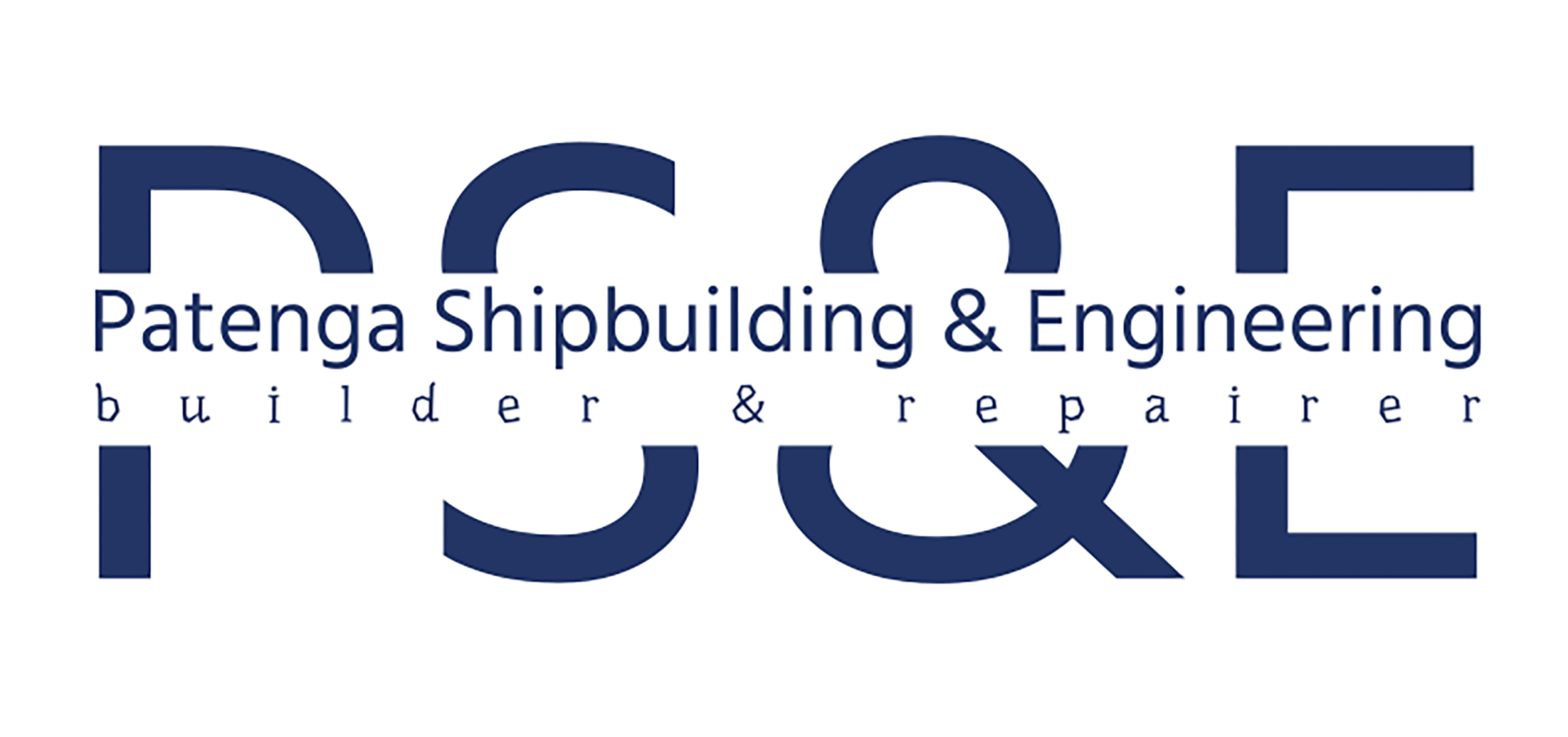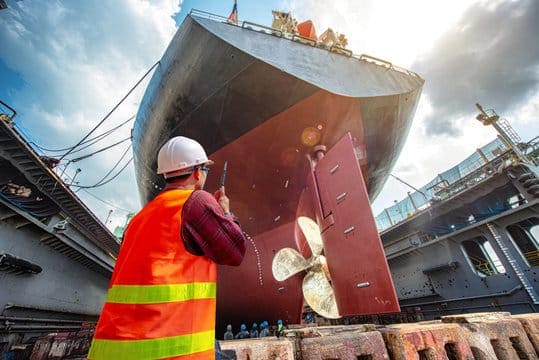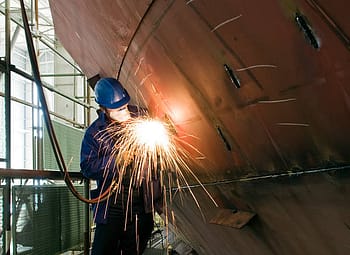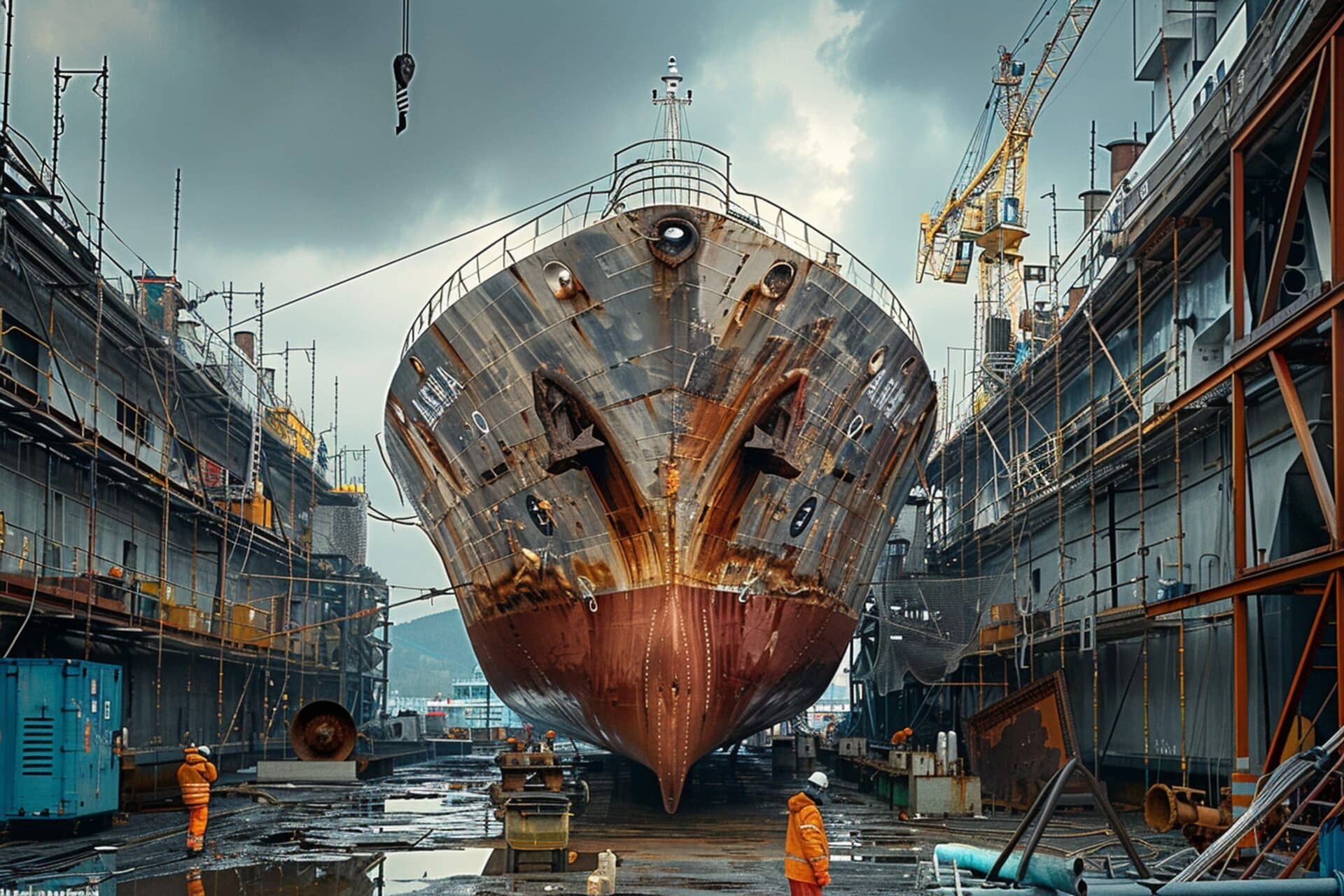
Profitable ships are those that are kept up properly. If you are a ship owner, you know how important it is to maintain your ship. But knowing where to begin can be difficult given the maritime industry’s continual demands.
Here’s when timely ship repair and preventative maintenance become essential. They guard against expensive malfunctions, delays, and even safety risks in addition to guaranteeing the efficient functioning of your vessel.
This blog post will share 5 vital ship repair and maintenance pointers that all ship owners should be aware of. You can keep things going smoothly and get the most out of your investment by adhering to these straightforward yet powerful tactics.
Table of Contents
ToggleHere are 5 essential ship repair and maintenance tips that every ship owner should know:
Maintaining a clean ship’s hull is essential to its durability and functionality. For a more thorough explanation of why and how to clean the hull, read on:
Why Is the Hull Clean?
- Less Drag and More Fuel Efficiency: Your vessel moves more rapidly when its hull is cleaned because it creates less surface friction with the water. There are major fuel savings as a result.
- Prevents Corrosion: A clean hull reduces the amount of saltwater that comes into direct contact with the metal, which can be highly corrosive.
- Reduces Marine Development: Sea creatures such as mussels and barnacles adore clinging to ship hulls. If allowed to continue, this growth will create drag and perhaps cause damage to the hull.
- Maintains Anti-fouling Paint: To stop marine growth, specialist anti-fouling paint is put to the hull of many vessels. The effectiveness of this paint is maintained with routine cleaning.
Hull Cleaning Method:
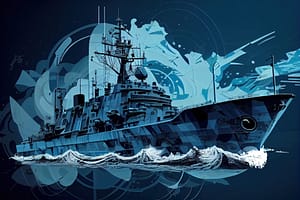
There are three main methods for cleaning a ship’s hull:
- Mechanical Cleaning: In order to get rid of marine growth, divers use brushes, scrapers, and high-pressure water jets in this age-old technique.
- Chemical Cleaning: To dissolve or reduce marine life, certain hull cleaning chemicals might be used. Nevertheless, there are environmental issues with this technology, and it might not be appropriate in all circumstances.
- New Technologies: Cutting technology techniques such as Remote Operated Vehicles (ROVs) and underwater drones are gaining traction. These can effectively clean the hull with the least amount of negative environmental impact.
Frequency of Cleaning:
The following variables affect how often hull cleaning is necessary:
- The type of water the vessel operates in (saltwater is harsher than freshwater)
- The length of voyages
- The type of marine growth present
- Regulations of the region
While freshwater vessels could need cleaning less frequently, ships in saltwater typically need it every few months. For advice on a precise cleaning regimen, speak with an expert.
Sacrificial metals called anodes aboard a vessel corrode to shield the hull and other vital parts from rust and wear. This is how to check and take care of them:
Inspection:
Frequency:
- Dry Docked Areas: Every two to three years, during dry docking, anodes on the hull are usually inspected.
- Continuously Submerged Areas: Inspections are conducted more frequently (every few months) for anodes on items such as sea strainers and rudders.
Visual Inspection:
- Over-Corrosion: Anode material should corrode, but not to the point of waste.
- Size Reduction: The anode has to be replaced if it has shrunk considerably from when it was first put.
- Marine Growth: Remove any mussels or barnacles that can reduce the anode’s efficiency.
Electrical Continuity Check (Optional):
To make sure there is a strong electrical connection between the anode and the structure it is protecting, use a voltmeter. A strong connection is indicated by no resistance or a discernible tone.
Implement a Regular Lubrication Schedule
- The huge main engine, steering gear, and deck equipment are only a few of the many moving pieces of a ship. These components’ friction may lead to deterioration, which lowers performance and increases the chance of failure.
- Set up a routine lubrication program to avoid this. It includes:
- Using maintenance documents and equipment specs to locate all of the ship’s lubricating locations.
- Depending on the particular machinery and operation circumstances, selecting the right lubricant type (grease or oil).
- scheduling lubricating duties (daily, weekly, monthly, etc.) at acceptable intervals.
The advantages of regular lubrication
- Increases the longevity of machinery by lowering wear and friction.
- Fuel savings are achieved by increasing operating efficiency.
- Reduces the possibility of expensive seaside repairs and malfunctions.
Electrical System Inspection and Maintenance:
Ship safety and functionality are largely dependent on its electrical systems. Troubleshooting, firefighting, and other risks can be avoided with routine maintenance and inspections. What you ought to do is as follows:
Scheduled Inspections: Depending on usage, do quarterly or monthly visual inspections of electrical components. Inspect for indications of wear and tear, oxidation, thermal overload, or loose hardware.
Principal Aspects: Critical parts such as batteries, terminals, wiring insulation, breakers, and switchboards should all be closely observed.
Test: Make sure electrical systems are operating properly by conducting routine tests. Verifying equipment operation, grounding systems, and voltage levels may be part of this.
Records: Keep track of all inspection results and remedial measures in a logbook.
Additional Tips:
- Electrical repairs and inspections should only be handled by trained professionals.
- To do simple electrical testing, get a high-quality multimeter.
- When cleaning and maintaining electrical components, always adhere to the manufacturer’s guidelines.
- If you want to find possible overheating problems before they cause damage, think about getting a thermal imaging camera.
1. Follow Maintainance a Schedule:
Every successful ship maintenance plan must start with this. Create a schedule that accounts for:
- Manufacturer recommendations: The manuals for your engine, equipment, and other onboard systems will specify the precise maintenance periods.
- Operating conditions: When choosing on the frequency of inspections, take into account variables such cargo type, weather patterns, and salinity of the water. Frequently checking may be necessary in harsh conditions.
- Regulations: For some equipment, regulatory organizations frequently impose mandatory maintenance requirements.
2. Make preventative maintenance a top priority: The saying “An ounce of prevention is worth a pound of cure” is extremely applicable to ships. Major malfunctions and expensive future repairs can be avoided with routine inspections, lubrication, and small modifications.
3. Examine and maintain anodes: The hull and other metal parts of a ship are shielded from galvanic corrosion by anodes, which are a vital component of the undersea defense system. Observation and upkeep guidelines are as follows:
Inspection:
Frequency: Check your anodes on a regular basis; depending on operation and water salinity, this should be done every one to three months.
Inspection Visually: Frequency: Keep an eye out for indications of aging. A full degradation, pitting, or thinning of the anode material indicates that replacement is required because this material is sacrificed to preserve other metals.
Measurement: Measuring the residual anode thickness in relation to the original requirements should be done using calipers. For information on the minimum thickness, consult the manufacturer’s instructions.
Maintenance:
Replacement: Use a compatible type and size anode in lieu of one that has worn out or sustained damage. To ensure efficient cathodic protection, make sure the electrical connection is made correctly.
Cleaning: To keep the anode functioning, periodically clean off any marine vegetation or buildup.
Maintaining Records: Keep a record of all anode replacements and inspections, including with the dates, kinds, and thicknesses utilized. Planning for upcoming maintenance and monitoring corrosion rates are aided by this.
4. Train Your Crew: A team that has received proper training can efficiently handle minor emergencies, carry out routine maintenance duties, and spot possible issues before they become serious ones.
5. Keep Thorough Records: Keep track of all maintenance tasks, inspections, and repairs made in a logbook or digital format. This information can assist identify reoccurring difficulties and will be very helpful for future reference.
Ship Repair and Maintenance Services in Bangladesh
Perfectly located with access to the busy ports of Patenga and Chittagong, Patenga Shipbuilding and Engineering is a successful supplier of ship repair and maintenance services in Bangladesh. Our goal is to minimize downtime and increase profits by ensuring the safe and efficient operation of your ships.
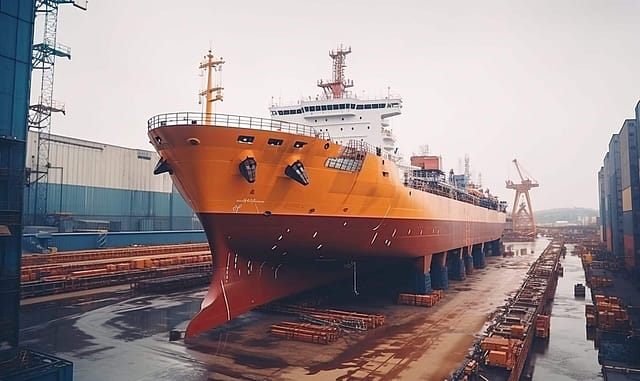
Our Expertise:
- Comprehensive Services: We offer a full spectrum of ship maintenance solutions, including:
- Hull, deck, and superstructure repair
- Engine and machinery overhaul and service
- Electrical and piping system repair
- Navigation and communication equipment maintenance
- Ballast tank cleaning and coating
- Scrubber installations (if applicable)
- Experienced Team: We have a staff of highly qualified and experienced mechanics, fitters, welders, and technicians who have worked on a wide range of sizes and types of ships.
- Advanced Technology: To provide premium repairs that adhere to the highest classification society requirements, we make use of contemporary tools and technology.
- Efficient Turnaround: We recognize how critical it is to maintain the functionality of your boats. To guarantee that repairs are completed on schedule, we place a high priority on effective project management and clear communication.
Our Commitment:
- Efficiency and Speed: We understand the importance of getting your ships back in operation quickly. We prioritize fast turnaround times without compromising on quality.
- Competitive Rates: We offer competitive pricing for our services, ensuring you receive excellent value for your investment.
- 24/7 Support: Our dedicated team is available 24/7 to respond to your emergency repair needs.
- Compliance and Safety: We adhere to the strictest safety regulations and classification society standards.
Contact Us Today:
Let Patenga Shipbuilding and Engineering be your trusted partner for all your ship repair and maintenance needs in Bangladesh. Contact us today for a free quote or to discuss your specific requirements.



